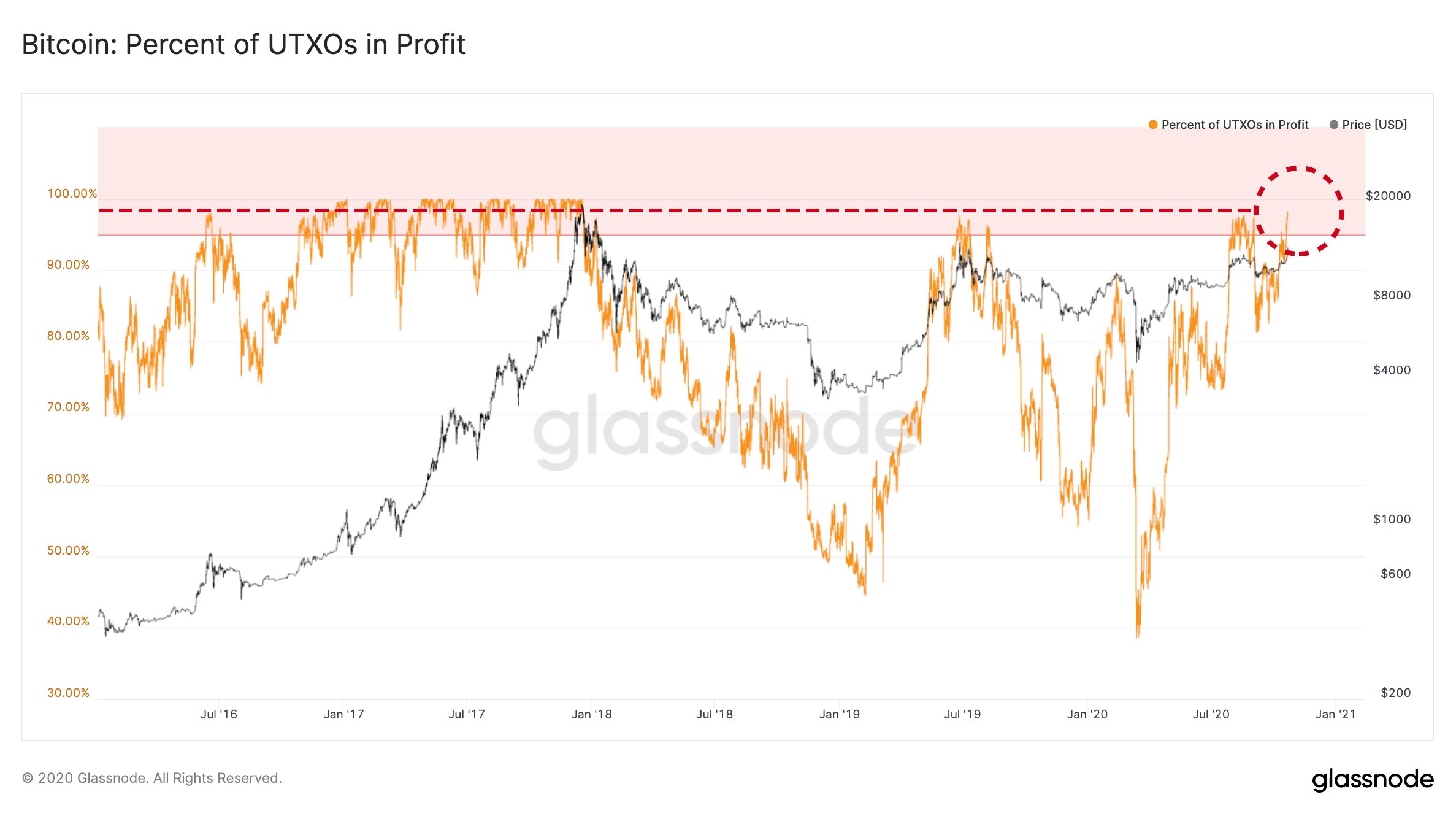
The price of Bitcoin rose to $20,000 in 2017 and crashed. According to Glassnode, the same top signal has emerged, but this time feels different for several reasons.
In 2017, the price of Bitcoin (BTC) reached as high as $20,000 and crashed rapidly. Now the same on-chain top signal has reemerged, according to researchers at Glassnode. But besides much stronger fundamentals this time around, the ongoing rally feels significantly different for other reasons too.
Bitcoin typically pulls back when whales take profit, causing a ripple effect throughout the cryptocurrency market. As such, when the overwhelming majority of the market is in profit, the chances of correction rises.

98% of all Bitcoin addresses are now in profit
Since the March 2020 crash, when the price of Bitcoin dropped below $3,600 on BitMEX, BTC has rallied 260%. After such a large rally, a consolidation phase or a pullback could cause a healthier rally in the medium term.
Glassnode researchers found that the last time 98% of all Bitcoin UTXOs were profitable was in December 2017. After Bitcoin peaked at $19,798 on Dec. 16, 2017, it dropped 45% within 6 days to $10,961.


At the time, many whales and retail investors took profit, causing massive volatility. Glassnode said:
“98% of all #Bitcoin UTXOs are currently in a state of profit. A level not seen since Dec 2017, and typical in previous $BTC bull markets.”
However, there are various fundamental and technical differences between the ongoing rally and the 2017 top.
First, the current rally of Bitcoin has been far more stable than the parabolic 2017 upsurge, which happened so suddenly th no clear resistance and support levels were established.

This time, Bitcoin has been climbing steadily, confirming $10,500, $11,300, $12,000 and $12,500 as key support levels.
Second, the overall institutional and spot demand is high relative to the volume coming from the derivatives market.
Following Square, MicroStrategy and Stone Ridge’s high profile allocations into Bitcoin, the volume of institution-focused platforms surged. LMAX Digital, CME and Bakkt specifically saw trading activity surge significantly since August.
Over-the-counter (OTC) volumes are rising too
When miners, whales and high-net-worth individuals buy and sell Bitcoin, they usually rely on the over-the-counter (OTC) market.
The OTC market allows large trades to be matched with minimum slippage, which otherwise could trigger massive price fluctuations on exchanges.
The consistent increase in over-the-counter deals suggests that the appetite for BTC from large investors and institutions is likely rising. Analysts at on-chain data provider CryptoQuant said:
“To see how much OTC deals are on-going, you might want to check out Fund Flow Ratio. Its 30-day moving average hits the 2-year low. Big wallets are moving outside of exchanges. Paypal news might be just the beginning.”
The confluence of high volume, a stable uptrend and growing OTC volumes makes new inflows into the Bitcoin market more likely. If the trend is sustained, it may offset potential profit-taking pullbacks in the cryptocurrency market.



